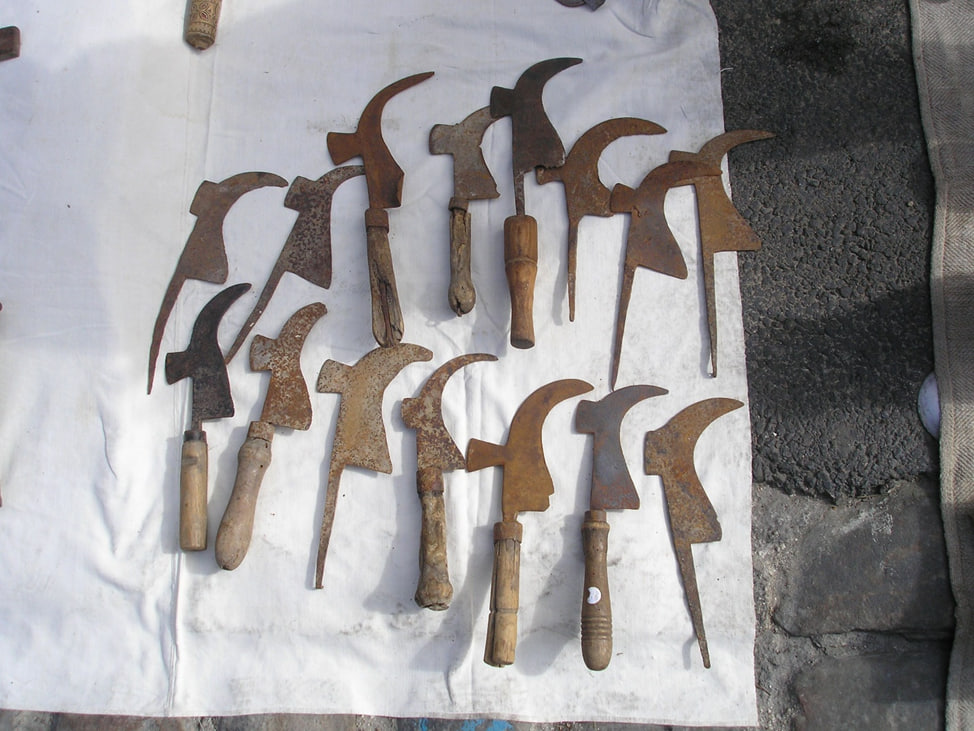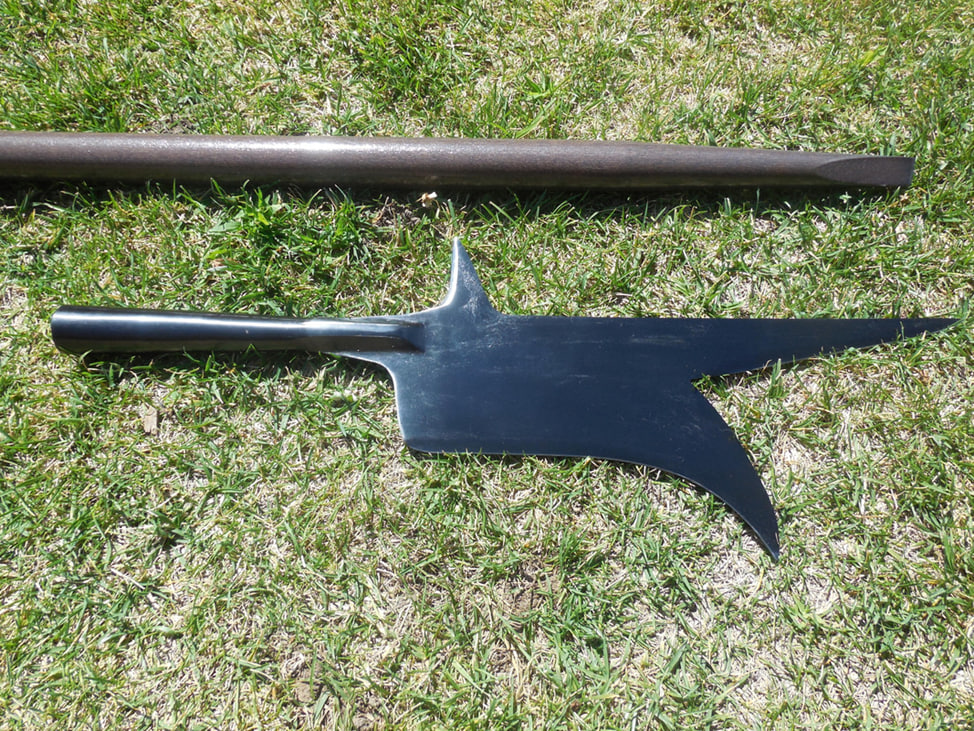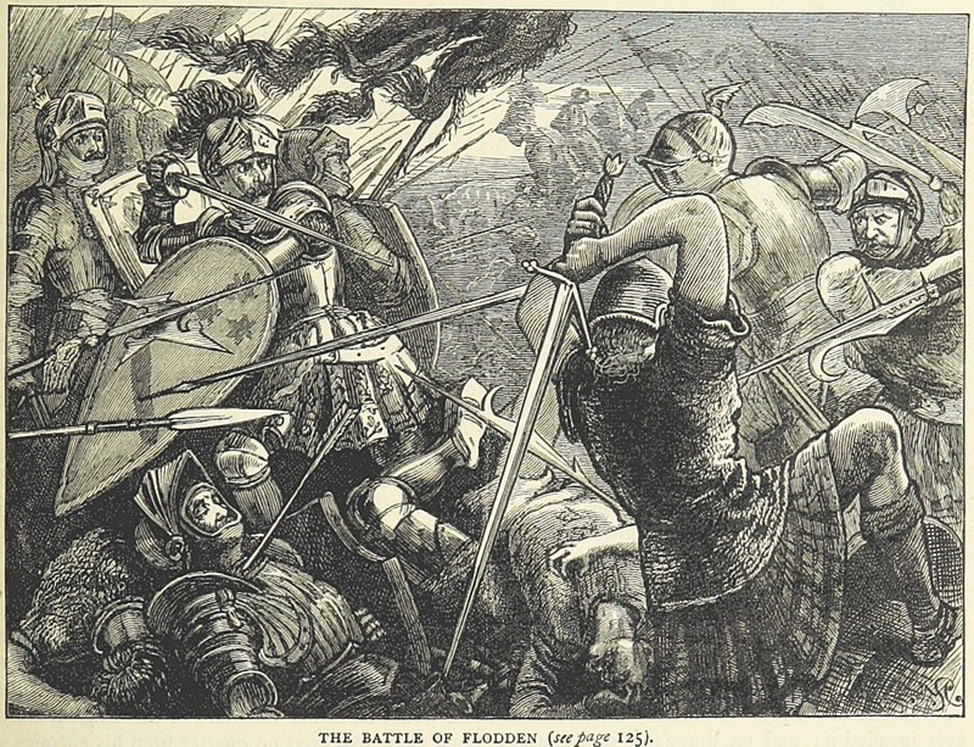
No products in the cart.
The bill polearm was originally an agricultural tool, which, after a number of changes, became widely used in the military field. The main popularity fell on the 14th-17th centuries. It was most commonly used in England, but was also seen in France, Italy and America during the colonial period.
The history of the bill:
Bill came from the bill hook tool, which was used to prune the branches of fruit trees. The tool was important because it allowed to collect branches for the construction of houses, or rather to strengthen clay walls.

Being a
fairly popular everyday tool in the conditions of regular feudal conflicts, a
military variation of the billhook arose. During the war, ordinary villagers
and poor townspeople could not afford to equip themselves with expensive
weapons like halberds.
The
appearance of the combat version of the bill hook was caused by the cheapness
in manufacturing, since complex forging methods were not required, similar to
the halberd. That is, it was possible to make a bill weapon without using the
forge welding method by the blacksmith, with the exception of the spike, which
was not on all copies. Also, less iron was consumed, which in the medieval era
was very expensive, not to mention steel. The state also could not afford the
high costs of equipping the militia. It was in this context that the combat
version of Bill Hook was born.
But also
representatives of a richer segment of the population could order a more
expensive version of the bill, for greater reliability and, of course,
aesthetics.
Appearance:
Bill shaft
weapon had many variations in appearance, depending on which craftsman forged
the product. The simplest forms of combat bill hook have a beak-shaped blade.
More complex ones have 1 spike and are slightly more difficult to manufacture.
Since the spikes probably required the use of forge welding (it all depended on
the preference of the master). By type it can be attributed to glaives. The
length of the shaft was 120 cm, and the head was about 40 cm.

Also, this
type of glaive was divided into white and black:
White bill
was usually forged by a city gunsmith, who has more narrowly focused knowledge
and used higher-quality raw materials. Steel and iron for the city blacksmith
were made by separate craftsmen. A gunsmith, in the presence of a good one,
could forge a high-quality glaive and, if desired, a more aesthetic appearance.
Black bill
was made by village blacksmiths who acted as multidisciplinary specialists.
That is, unlike their urban colleagues, they had to make iron or more or less
carbon steel on their own. Starting from the stage of searching in rivers,
swamps and other places for iron compounds, which then needs to be turned into
ore.

This was
followed by the stage of processing and transformation into a pig iron with the
help of a bloomery. After that, the raw materials required partial recovery to
increase the carbon in the alloy and reduce the slag. Naturally, one village
blacksmith with conditional assistants who have basic knowledge of the
manufacture of raw materials most likely would not be able to observe the
quality of steel or iron that a city master would have.
Application and
effectiveness of the bill on the battlefield:
Glaive Bill
in the hands of a simple warrior (a former peasant) could be much more
effective during the battle. First of all, the variations of the military billhook
have a beak-shaped blade with a different level of bend, with which it was
possible to hook the enemy in the area of the articulation of the armor. The
beak could break through the chain mail when applying a sweeping slashing blow.
The spike on the head of some specimens could also be used in combat. The
pecking blow of the tip could be effective against both chain mail or plate
armor. Due to the long shaft, an enemy with a short weapon had less chances,
especially in a tight formation.
Theoretically,
under certain conditions, a detachment armed with such a subtype of glaive
could be successfully used against cavalry:
The success
of such a foot detachment could be caused by the critical smallness of the
enemy's cavalry, which did not allow during the battle to break the formation
and undermine the morale of the infantrymen. If there is a conditional meeting
of several horsemen and infantrymen with bills, the shaft weapon could really
manifest itself due to the ability to catch on the joints of armor and rings of
chain mail.
Also,
billmen can gain the upper hand under difficult terrain conditions, which will
not allow the cavalry to maneuver and hit the infantry in different directions.
Basically, of course, it will be a narrow space, for example, a break in the
wall. In such conditions, a small group of billmen with a low level of
organization will be able to resist cavalry.
In an open
area, warriors with glaives without a serious military organization will not be
able to resist cavalry without serious support from the allied cavalry and
cavalry. It will be enough for the cavalry to break through the first ranks to
reduce the defenses of the infantry. The only ones who could defeat the cavalry
were Swiss mercenaries and landsknechts due to high professionalism and the use
of firearms coupled with pikes and other melee weapons.
In terms of prevalence on the battlefield, the British Isles took the first place in popularity. In England at the beginning of the 16th century, a combination of bow and bill was used, while in other European countries the combination of arquebuses and spades was changed. The most famous use of the bill in battle was the Battle of Flodden in 1513.

About 20%
of the troops of the English kingdom were armed with this subtype of glaive.
During the Italian War of 1542 – 1546, the main shaft weapon of the British was
the bill. There the British defeated the Scottish pikemen relying on Billmen
and archers with the support of artillery.
The further fate of Bill:
By the end
of the 17th century, the bill was quite an outdated weapon, however, like most
other glaives. However, it was still used by English colonists in North
America. Thus, Bill Hook's agricultural tool turned out to be a fairly cheap,
but excellent weapon for battle. As a result, for the period of the 15th – 17th
century, the infantry troops of the English kingdom were supplied with bills.